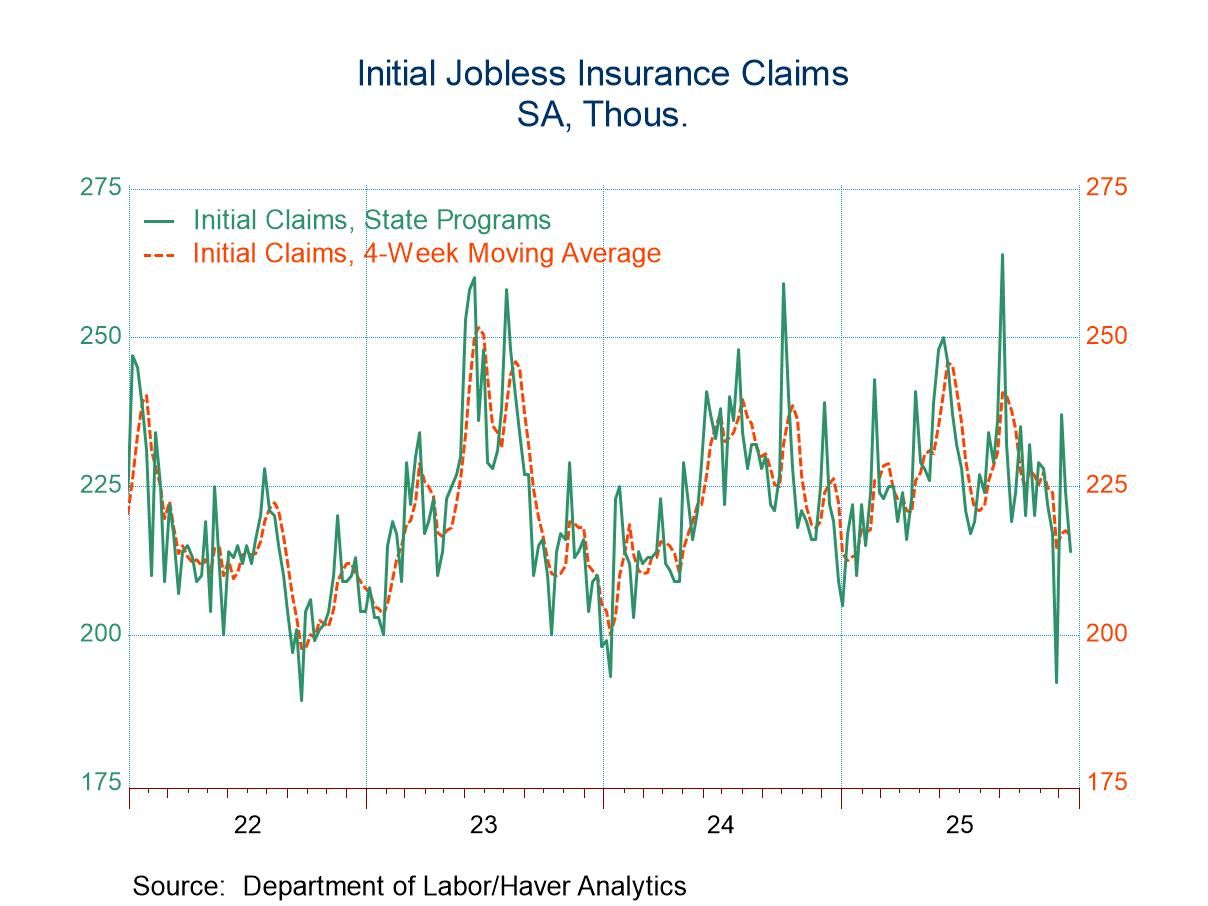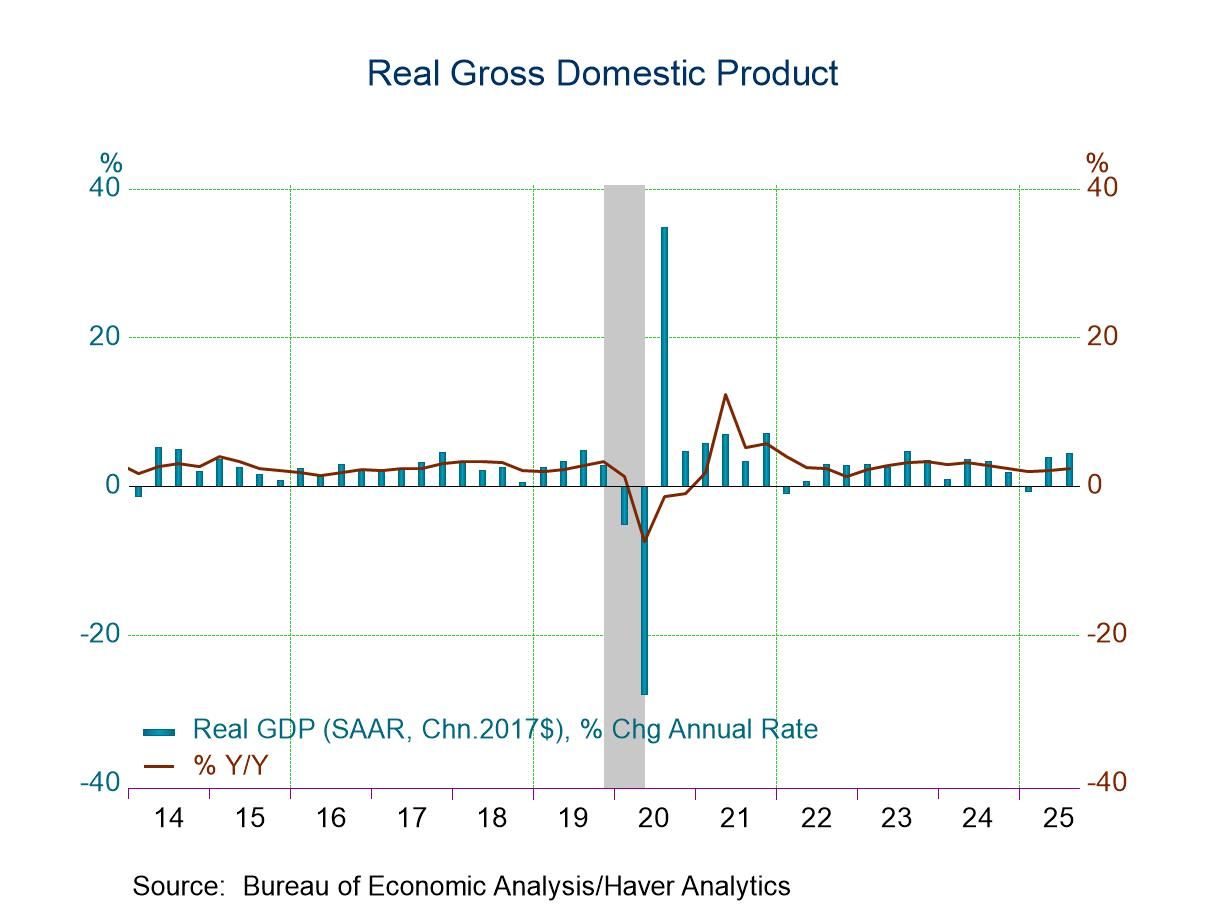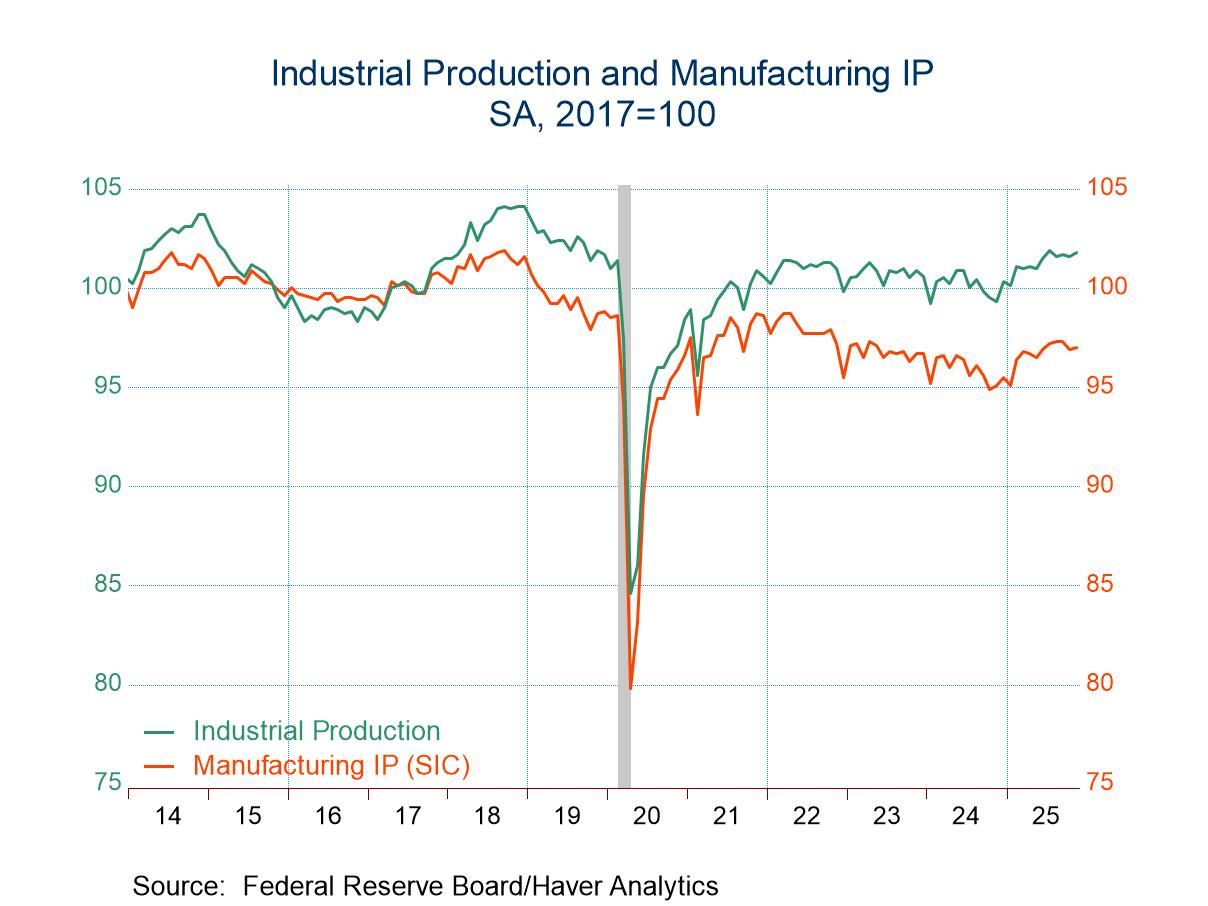U.K. CBI Survey Offers Mixed Signals

Retail Sales and Orders- The survey on the U.K. distributive trades by the Confederation of British Industry survey (CBI) offers a mixed outlook on current performance, but one that remains decidedly weak. In March sales compared to a year ago post an improved reading of +2, compared to -7 in February and to a much weaker report for January. Orders compared to a year ago, however, deteriorated in March falling to -22 from -14 in February, but still stronger than their weak January level and above their 12-month average. Sales for the time-of-year, a concept which is essentially a seasonally adjusted gauge, moved up to zero in March from -1 in February; again, they are significantly stronger than their January reading and above their 12-month average.
Expected Sales and Orders- The March survey also provides expectations for April. April numbers are generally weak and mixed in terms of month-to-month comparisons. Expected sales measured year-over-year in April survey at a net reading of -25 compared to a -15 expectation in March. This is a sharp monthly deterioration but still an improvement from end-of-year values. It is also a weaker reading than the 12-month average. Orders year-over-year improve from March at a -24 reading, stronger than -36 in March. The expected April reading is stronger than the end of year reading but in line with the 12-month average performance for this metric. Expected sales for the time of year improve very marginally in April to -8 from -9; however, that's a significant improvement from end-of-year values and a reading that's slightly better than the 12-month average.
Metric Rankings- When we assess the retail sales and sales expectations, the results from March and for April have weaknesses. Sales compared to a year ago perform at a 40.8 percentile standing, which is quite weak. Year-over-year orders perform at a 16-percentile standing, while sales for the time-of-year have a 65.5 percentile standing. That's the observation that was flat in March; that performance is slightly better than its historic median performance. However, turning to the expectations for April sales… sales compared to a year ago have an anemic 7-percentile standing, orders compared to a year ago have a 10.5 percentile standing and sales for the time-of-year have a 33.7 percentile standing. All of these are below their historic medians. On balance, while we find some improvement in sales month-to-month - and definite improvement compared to the end of year- the comparisons over the 12-month average are not particularly favorable and the rankings of these index values are quite poor when placed in an historic context.
Wholesaling Wholesale Sales and Orders- For wholesaling in March, there's broad-based weakness with sales year-over-year, orders year-over-year and sales for the time-of-year all posting negative values compared to positive readings in February. However, the March data once again are stronger than data posted back in January and stronger compared to 12-month averages. The performance of the various measures of sales and orders provides a mixed picture over different horizons.
Wholesale Expected Sales and Orders- Expectations for April in wholesaling also turned negative for sales compared to a year ago, orders compared to a year ago, and sales for the time-of-year. All these metrics are negative compared to positive values in March although once again they're significantly stronger than their end of year values and their performance is not generally much different from their 12-month averages.
Metric Rankings in Wholesaling- Assessing wholesaling performance on a ranking format, the current performance of sales compared to a year ago has a 23.9 percentile standing, orders compared to a year ago have a 26-percentile standing, and sales for the time-of-year have a 20-percentile standing. All of these are quite weak and in the neighborhood of a lower 1/4 to 1/5 standing of their respective historic queues of data. Expectations for wholesaling in April stand in their 28th percentile; orders compared to a year ago stand in their 22.8 percentile; sales evaluated relative to the time-of-year stand in their 31.6 percentile. Once again these are weak readings- all of them below their historic medians (below a 50% standing).

Summing up The distributive trades data on retailing and wholesaling in March and the expectations for April continue to spin out weak numbers. The readings are uneven in terms of showing month-to-month improvement but whatever improvement exists, occurs in a climate that is clearly still very weak. There is a sharp improvement that is broadly experienced, from some very weak year-end survey values, however. The bottom line for the distributive trades portion of the economy is that conditions are still challenged and floundering. There is no clear evidence of a recovery in place. Traditional sales volume data, however, show ongoing improvement in the growth of retail sales volumes although the traditional data lag. And, despite a clear uptrend in growth rates for the traditional sales data, those growth rates are merely transiting from negative numbers toward zero, not a truly reassuring result.
Robert Brusca
AuthorMore in Author Profile »Robert A. Brusca is Chief Economist of Fact and Opinion Economics, a consulting firm he founded in Manhattan. He has been an economist on Wall Street for over 25 years. He has visited central banking and large institutional clients in over 30 countries in his career as an economist. Mr. Brusca was a Divisional Research Chief at the Federal Reserve Bank of NY (Chief of the International Financial markets Division), a Fed Watcher at Irving Trust and Chief Economist at Nikko Securities International. He is widely quoted and appears in various media. Mr. Brusca holds an MA and Ph.D. in economics from Michigan State University and a BA in Economics from the University of Michigan. His research pursues his strong interests in non aligned policy economics as well as international economics. FAO Economics’ research targets investors to assist them in making better investment decisions in stocks, bonds and in a variety of international assets. The company does not manage money and has no conflicts in giving economic advice.






